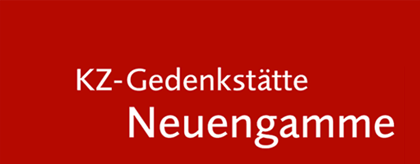Ladelund
From 1 November to 16 December 1944, there was a satellite camp of Neuengamme concentration camp in Ladelund near the Danish border. The 2,000 male prisoners here were housed in a camp of huts which was formerly used by the Reich Labour Service and was designed to hold just 250 people. The first 1,000 prisoners arrived at Ladelund on 1 November 1944 from the Husum-Schwesing camp, while the rest came from the Neuengamme main camp. Prisoners from the Netherlands made up the largest group, though men from Poland and the Soviet Union, France, Italy, Belgium and Czechoslovakia were also imprisoned in Ladelund.
The concentration camp prisoners were forced to dig anti-tank trenches for a line of defence. This work was commissioned by the Reich Defence Commissar (Reichsverteidigungskommissar) in Military District X (Wehrkreis X). The prisoners had to work while standing in ground water in the freezing cold, wearing wooden clogs. The gruelling working conditions, insufficient food and overcrowded huts led to an extremely high death rate during the camp’s six-week existence. 300 prisoners are buried in the local cemetery, 110 of whom came from the municipality of Putten in the Netherlands. Putten had the been the target of Wehrmacht “retaliation measures” in October 1944, during which all men in the area were deported to Neuengamme concentration camp.
The commander of the camp was SS-Untersturmführer Hans Hermann Griem, and the guards were made up of SS men and navy artillerymen.
On 16 December 1944, the SS evacuated the Ladelund satellite camp and transported the survivors back to the Neuengamme main camp.
Period
1 November 1944 to 16 December 1944
Number of Prisoners
more than 2000
Kind of Work
Construction of fortifications and anti-tank ditches (“Friesenwall” project)
Labor on Behalf of
Reich Defence Commissar in Military District X
Location
Directions
KZ-Gedenk- und Begegnungsstätte Ladelund
Raiffeisenstraße 3
25926 Ladelund
Germany
Memorial
Immediately after the war, Ladelund pastor Johannes Meyer contacted the relatives of the victims. In 1949 he had a grove constructed to honour the prisoners, in the middle of which a “cross of reconciliation” was placed. This grove of honour was one of the first German concentration camp memorials. This connection between death in the concentration camp and the Christian concept of divine comfort and reconciliation cleared the way for an increasingly close relationship between the parish of Ladelund and the equally church-orientated Putten, as can be seen in the large number of mutual visits and events.
The memorial in the cemetery was expanded in 1967. A memorial stone there lists the names of the 300 prisoners who died in the camp.
In the 1980s, a group of schoolchildren and their teacher Dr. Jörn-Peter Leppien began researching the history of the Ladelund satellite camp. In 1990, a document building containing a permanent exhibition on the history of the camp was constructed within sight of the graves of the concentration camp prisoners.
On the edge of the former camp, the last hut of which was torn down in 1970, there is a memorial stone and a sculpture commemorating the prisoners which was created by students of the Theodor-Schäfer-Berufsbildungswerkes (vocational training centre) in Husum in 2002.
The Ladelund Concentration Camp Memorial and Meeting Place is the only German concentration camp memorial with a permanent exhibition funded by the church.
Opening hours:
Tue.–Fri. 10:00 AM-4:00 PM
Sat.-Sun. 2:00 PM-4:00 PM and upon arrangement
Visits (outside the official opening hours as well), talks with witnesses and educational programmes for schoolchildren and groups of young people or adults can be arranged with the memorial.
Contact
KZ-Gedenk- und Begegnungsstätte Ladelund
Raiffeisenstraße 3
25926 Ladelund
Germany
Tel.: +49 (0) 4666 – 4 49
Email: info@kz-gedenkstaette-ladelund.de
Homepage: https://www.kz-gedenkstaette-ladelund.de


